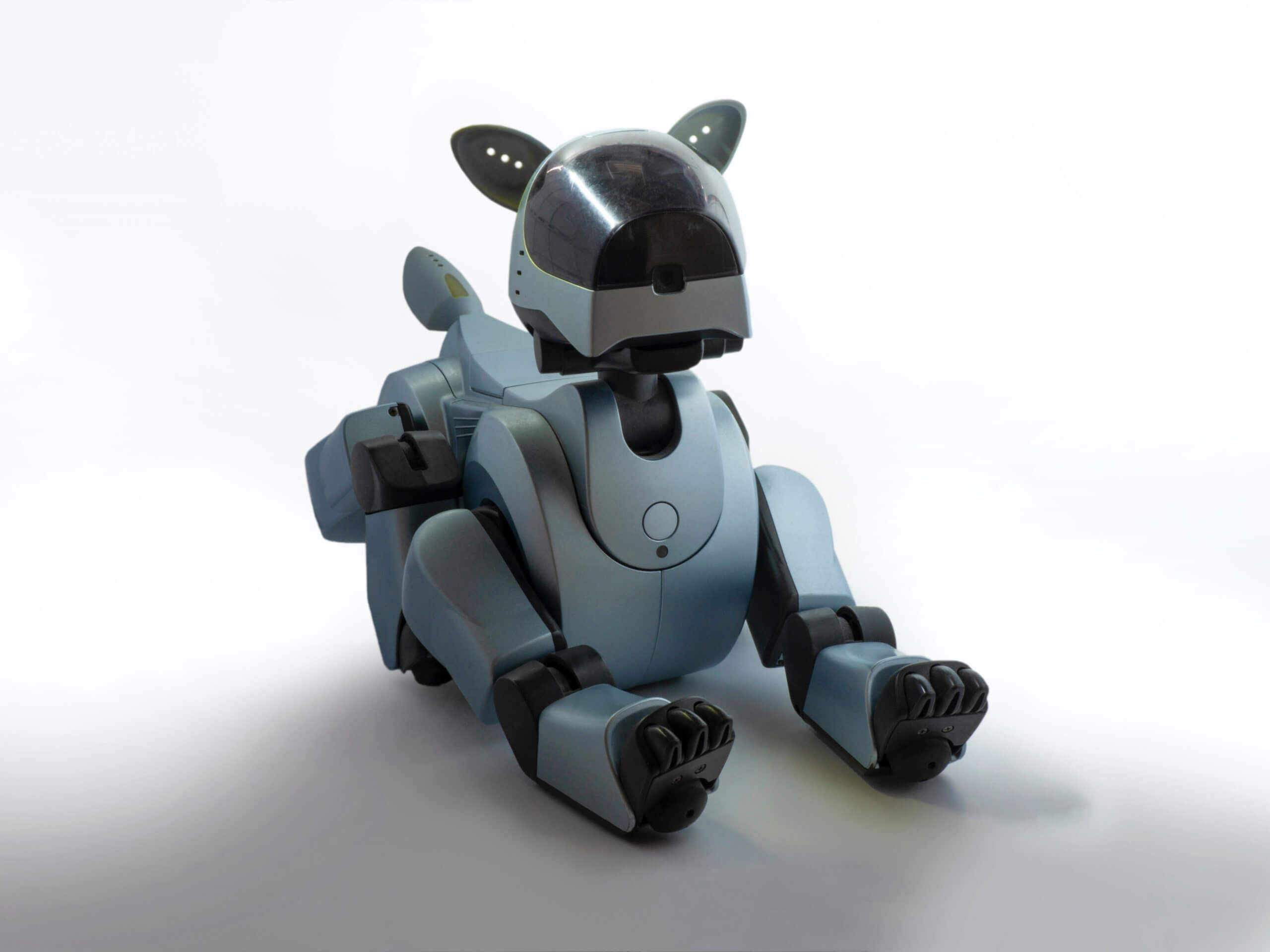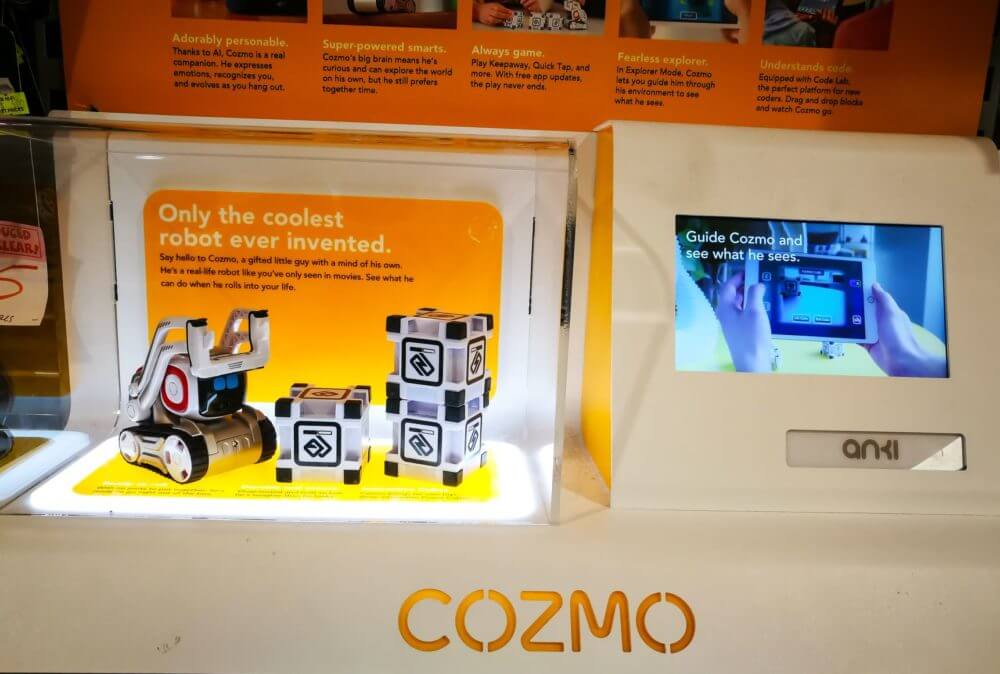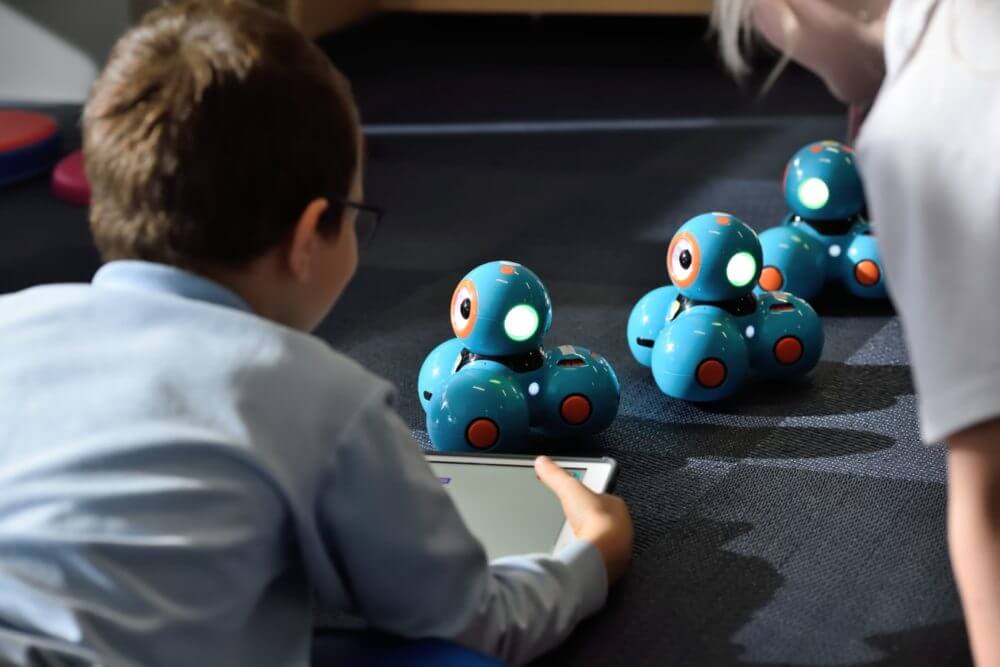If you’re a parent, you're probably already aware of the importance of getting kids interested in the stem subjects from an early age - that’s science, technology, engineering, and maths.
Contents
If you’ve got a nine-year-old, or know one, you’ll know that this is a time when their curiosity and thirst for knowledge is at its peak.
In a world of social media and smartphones, getting your kids to do anything else can feel impossible at times, but that’s where stem toys come in.
Stem toys can help nurture your child's intellectual development and open up their imagination - whether their conducting experiments, building something, or coding.

The skills your child acquires while playing with stem toys at this age can help shape their futures.
Who knows, in the future, your kid could be developing life-saving vaccines, designing state-of-the-art buildings, or programming the latest artificial intelligence - the world is their oyster.
If you don’t know where to start, fear not. In this article, we’re going to focus on the best stem toys for 9-year-olds. Keen to find out more?
Keep reading to find our top picks...
OUR TOP PICK
If you’ve got a child who’s a big fan of technology and you want to help them develop their coding skills, Cozmo could be the perfect aid.
Cozmo is a loyal sidekick robot who can be challenged to games or used in “explorer mode” to see things from his perspective.
Thanks to artificial intelligence, Cozmo can express hundreds of emotions, recognize you, and even remember your name.
The more you hang out together, the more his personality develops.
With a beginner-friendly interface that’s easy to use, Cozmo connects to iOS or Android via the free Cozmo app and offers a range of games, from beginner level to more advanced.
Cozmo’s Code Lab is designed for children to explore, organize, and express their ideas creatively by programming Cozmo to play new games and tricks.
We loved this robot not only for his adorable personality but also because this is a toy that your child won’t simply toss to one side after a week.
There are endless coding opportunities with Cozmo, and his intelligence evolves as he gets to know you better, guaranteeing hundreds of hours of fun.
Pros
- Offers a range of games and teaches your child to code.
- With four motors and over fifty gears, Cozmo moves like a mini-mars rover.
- A 30fps VGA camera and facial recognition software let him remember interactions.
- Cozmo’s personality evolves as your kid gets to know him better.
- 128 x 64 resolution facial display so you can see how Cozmo is feeling.
- Easy to use interface.
- Connects to iOS or Android device and the free Cozmo app.
- Tested for durability and security.
- Perfect for ages 8 and above.
- Regular updates - so Cozmo constantly evolves.
- Unisex.
Cons
- It’s not cheap!
EDITORS CHOICE
ThinkFun has sold over 50 million of their fun puzzle game Gravity Maze, and with up to 60 challenges ranging from beginner to advanced, this game will certainly keep your child on their toes.
Gravity Maze is a combination logic game and marble run which will help develop your child’s critical skills through spatial reasoning and planning and is great for building problem-solving skills in future engineers.
Whilst many other games connect to smartphones or tablets, this game will get your kid away from their screens and will provide them with hours of entertainment whilst also training their brain.
It comes with clear, easy-to-read instructions in a high-quality manual so you can start playing and solving right away.
Players also love Gravity Maze for its versatility - it’s great for boys, girls, adults, and teens - and offers a host of different games for different levels.
Pros
- No screens or apps involved.
- Highly rated worldwide.
- Over 60 challenges in one toy.
- Develops critical thinking, reasoning, and planning skills.
- Offers a range of games which vary in level, from beginner to advanced.
- Easy-to-read manual and instructions.
- Great for all of the family.
- Unisex.
- Affordable.
Cons
- You may need to assist your kid at first - this can be a bit tricky to get the hang of.
BEST VALUE
MudWatt is a bio-energy pet that runs on living microbes and offers long-term fun and learning.
Your kids can maximize MudWatt’s power by experimenting with different soil and food, as well as different temperatures.
As the microbes grow, the LED blinks faster and faster, and the free MudWatt Explorer App lets kids measure the blinks to discover power level and microbe population.
Kids can track MudWatt’s growth over a two-week period and then unlock the fun and educational comic via the app, or if you're not a fan of smartphones and tablets, they can track data manually on the calculator spreadsheet instead.
This toy allows kids to think for themselves and experiment, and along the way, they’ll learn more about renewable energy, sustainability, microbiology, electricity, and more.
Through MudWatt, they can attempt to power a digital clock or connect multiple MudWatts to try powering other electronics. Kids can also join the online community to share their ideas and results.
In our opinion, this is a great game for striking a balance between the physical, and the digital, plus it gets your kids interested in all things green and sustainable, which can only be an asset as we seek more means of renewable energy.
Pros
- Combines microbiology, engineering, physics, and sustainability.
- Allows kids to come up with creative ideas to boost MudWatt’s power.
- Connect with the MudWatt Explorer app to access the online community and track progress.
- Kids can attempt to power different electronics with MudWatt.
- Easy to use and understand.
Cons
- Shorter lifespan than other products.
RUNNER UP
Allow your kids to discover how the human body works, with this fascinating game which requires players to remove 21 realistic vital organs, bones, and muscles using the included forceps and tweezers, then watch them rebuild the model from the toe to skullcap to see how well they know their anatomy.
This fun, easy-to-use set also comes with an equally engaging anatomy book, which allows readers to follow the journey of a slice of pizza as it travels through the body and interacts with different internal systems.
The book features photographs of real organs, engaging illustrations, and answers to common body function questions.
This stimulating game helps develop your kids’ knowledge of the human body and internal organs and also allows children to build individual insights, problem-solving skills, divergent thinking, and memory skills. It's great for curious kids who love to ask questions!
We loved that it’s non-digital to give your kids that much-needed break from their screens. It’s also the perfect accompaniment to home-schooling lessons or classroom activities.
Pros
- Fun and engaging.
- Includes anatomy book with photographs and illustrations.
- Helps kids learn about anatomy and develops problem-solving skills, divergent thinking.
- Kids can play and learn real-world skills and concepts.
- Highly rated, affordable product.
- Great for a range of ages, from 8+.
Cons
- Kids may tire of this once they play a couple of times.
RUNNER UP
If you’re looking for a game that’ll build your child’s maths skills, but won’t leave them hating the subject, then look no further - Prime Climb is perfect for deepening math skills and building upon what they already know to acquire a more advanced level of math and arithmetic.
This board game is colorful, engaging, and endlessly replayable.
To play, players must learn and master multiplication, division, factorization, and prime number concepts by combining colors, picking up Prime cards, and bumping your opponents back to start as you go.
This isn’t just for kids either, as this is the perfect addition to a family board game night or to take away on vacation, and is a great opportunity to learn and play.
You can expect top quality from this board game and if it’s deficient in any way, the manufacturer will provide a full product replacement.
Pros
- Educational and fun.
- Utilizes a range of math skills: multiplication, division, factorization, and prime numbers.
- Colorful and engaging design.
- No apps required.
- Great for the whole family.
- Portable so perfect for vacations.
- Replacement product if faulty.
Cons
- Requires 2-4 players.
RUNNER UP
This game is great for kids who like to build things rather than sit and learn.
Young engineers will be kept on their toes whilst they assemble over 100 different electronic circuit projects with just 30 electronic parts.
They can construct working models of objects such as a photosensor, flashing light, adjustable-volume siren, and much more.
Unlike other engineering projects, this set requires no additional tools and no soldering; simply click the color-coded pieces together to develop working circuits and devices.
It also comes with a clear, easy to understand, illustrated manual, which allows them to gain valuable lessons in not only building but in following instructions, too.
This also encourages your child to work independently and will give them a sense of achievement when they accomplish each project.
Pros
- Good for kids who like to be proactive and keep busy.
- Over 100 different circuit projects to create with just 30 parts.
- No additional tools required.
- Easy to understand manual.
- Develops skills in building and following instructions.
- Highly rated and excellent value for money.
Cons
- Some kids may need supervision or assistance with some of the harder projects.
Buyer’s Guide
Digital or non-digital
Do you want the toy to be operated through an app, or would you rather it be offline, to limit your child’s screen time?
The AHA recommends that kids should spend no more than 2 hours a day looking at a screen - that’s not long, particularly if your kid watches a lot of television and uses tablets or smartphones, too.
It’s worth bearing this in mind when considering whether or not you purchase a toy or game which connects to an app.
On one hand, it could be a good way of getting them to learn stem-related skills through a digital device, but on the other hand, it could be adding to their screen time, and you may prefer to opt for an offline activity as a way to take them away from their screens.
Number of players
Does your child prefer to play alone? Or do they enjoy playing games with family members and friends? Bear this in mind when selecting a game.
Board games can be great for bringing the whole family together, however, not all kids enjoy competing and some prefer to play alone.
If your child is the quiet type, they could thrive if given a toy that they have to develop and learn by themselves, and this could help nurture their problem-solving skills and promote independent thinking.
On the other hand, some children will be more encouraged to play a particular game if others are involved - it really does depend on an individual’s personality.
Shelf Life
Sadly we live in a throw-away culture, where things expire quickly and children are used to acquiring more and more items.
How long will the toy occupy your child for? Is it something they can develop and learn with over time, such as Cozmo, the robot who grows in personality and intelligence as your child gets to know it better?
Or is it more of a two-week project they’ll complete quickly and then get bored of? You should consider this when purchasing your toy, particularly if you’re investing a lot of money into it.
Versatility
Does the toy offer multiple games, modes, levels, or programs? Will it keep your child entertained and stimulate their learning by offering more than one task?
Try to look for a toy that your child can get multiple skills from, not something they’ll play once, and then toss to one side.
We loved Cozmo for his evolving intelligence and regular updates, as well as Gravity Maze as it offers up to 60 challenges, from beginner to advanced level.
Complexity
While stem toys should provide a challenge for your child, you don’t want to opt for something too complex.
If a game or toy appears too complicated, your child is automatically going to feel put-off and is less likely to play.
Choose a toy that comes with clear, user-friendly guidelines or multiple levels so your child can gradually get to grips with the toy or game.
You should also select a toy targeted not only at your child’s age group but also at their educational level.
Perhaps you could select a game that will help with their numeracy skills if they struggle with math? On the other hand, if your child is good with technology, why not take their skills to the next level with a coding toy or robot?
Instructions
Following on from complexity, does the toy or game come with clear instructions? Ensure the instructions are kid-friendly and if possible, illustrated with a large font.
Nobody wants to buy their kid a toy that is complex for even adults to understand. The better explained the concepts are, the more likely your kid is to work independently and develop their ability to follow instructions.
On the other hand, if the instructions are scarce or difficult to understand, they’re far more likely to become frustrated and give up early on.
It’s all about striking the balance between giving your child a challenge that will help them build new skills, and providing them with something that will utilize pre-existing knowledge from school and general life.
Fun factor
Sure, stem toys are all about learning and developing your kids' skills from an early age.
However, these toys also need to be fun, stimulating, and inspiring, as otherwise, they’re not going to do a very good job of painting the stem subjects in a positive light.
Value for money
We’re often willing to spend a lot on our kids, but it can be difficult with toys as most have a short expiry date. After all, how many toys can you honestly say your kid still plays with a year after buying them? Consider this when purchasing a toy.
Some artificial intelligence toys have regular software updates which means they’re constantly changing and evolving, whereas some board games are also versatile and provide multiple challenges.
It can be worth investing that little bit extra if it’s going to last a long time or provide your child with months - or hopefully years - of fun and learning.
Related: Why Board Games Are So Expensive
Frequently Asked Questions
What are stem toys?
STEM stands for Science, Technology, Engineering, and Math, and stem toys are geared towards inspiring curiosity, learning, and education.
STEM-related toys and products help kids develop useful problem-solving and critical thinking skills in areas that are continually seeing growth and job opportunities.
These toys could be based on engineering something, running a scientific experiment or growing something, solving mathematical or logical problems, or developing a code.
While stem toys have an educational twist, they’re not completely learning-based and are designed to be fun, engaging, and stimulating.
What should a nine-year-old be learning?
Nine-year-old children will be learning multiplication and division of multiple digits in school and will be starting to learn about fractions and geometry.
They will also be focusing on drawing graphs and charts using data and will work on problems that require analytical and logical thinking.
As a parent of a five-year-old inquisitive boy, I have gained a lot of experience finding fun activities and toys to help him understand science and understanding our world in general. On this blog, you’ll find an extensive amount of tutorials, guides, and toys about Science, Technology, Engineering, and Math based on my personal experience to help your child develop critical STEM skills.











